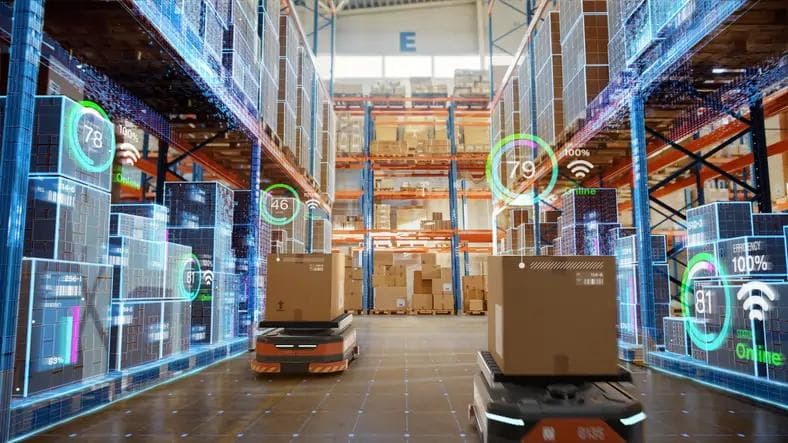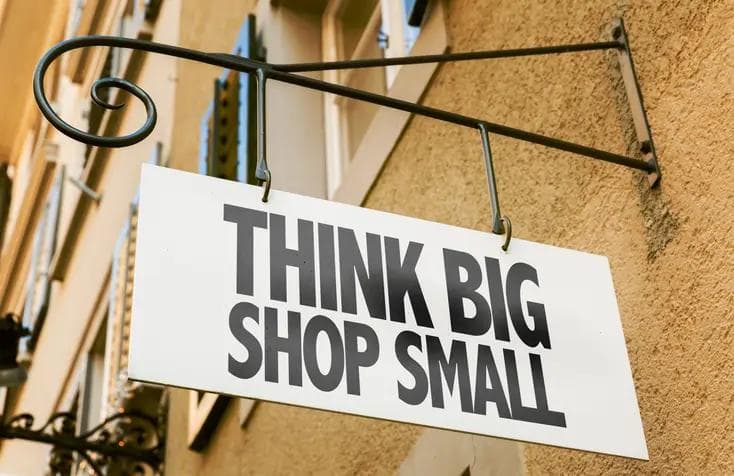Online retailers: Using technology to scale up
Online retailers: Using technology to scale up
Published by Wanda Rich
Posted on August 23, 2021

Published by Wanda Rich
Posted on August 23, 2021

By Ben Kaye, E-commerce and OMS Expert at Mintsoft
With the levels of online shopping continuing to increase, online retailers are feeling the effect of the rising demand of order fulfilment. A digitisation strategy and implementation of technology is a great way for online retailers to keep up with demand of E-commerce and multi-channel selling.
There are many aspects which have influenced the E-commerce industry recently, with challenges such a rise in consumer demand and supply chain issues as a result of the pandemic and Brexit being just a few. An increase in customer expectation is another influencing factor; online shoppers now expect some sort of value at every touch point – easy payment options, cheap and convenient shipping and returns, and a seamless shopping experience, which is only adding to the growing pressures for online retailers. These factors mean that order fulfilment is becoming increasingly challenging, but also offer a great opportunity for E-commerce businesses. But what does this mean for online retailers?
As the sector re-opens its physical door, all retailers have one thing in common; they must adapt to the demand shown in online shopping and revisit their approaches; from their supply chain through to the customer experience offered, or risk being left behind. But just how can technology support with keeping up with demand and staying ahead of competition in the online retailer space?
Consumers are looking for many things when it comes to online shopping – not just the perfect product. With more marketplaces available than ever before, consumer choice is at an all-time high, meaning competition has also increased. As a minimum, online retailers must change their strategies to be able to meet their customers where they are shopping and bear in mind that the ability to shop 24/7 is also part of E-commerce’s growth.
Expanding the number of marketplaces you sell on is key to meeting customers where they are shopping, and removes the risk of losing a sale to a competitor. By adding more platforms to your business, you will also attract more sales from a more diverse audience and ensure you are selling on the platforms your consumers are using.
Of course, utilising additional marketplaces and making more sales will create more of a demand when it comes to fulfilment which you must be prepared for. Implementing an Order Management System (OMS) will allow online retailers to take control of all marketplaces and online shops from one centralised platform with the use of integrations. Automatic stock synchronisation features will ensure all online shops are kept up to date, removing the risk of overselling products.
Gaining control on inventory is the key to success in anticipating peak and becoming aware of lead times from suppliers and getting a handle on the data is a lot easier to do with the use of technology.
Outsourcing logistics to a third-party logistics (3PL) provider is a popular solution amongst online retailers as it helps to keep orders moving. Partnering with a 3PL has many benefits – the process of outsourcing logistic processes helps with order fulfillment by eliminating the strain for online retailers. A 3PL partner will take care of tedious processes and nowadays, many 3PL businesses have evolved their offerings by transitioning into tech first entities. Using a 3PL which has invested in technology allows online retailers to deliver a more responsive and consistent service.
A big part of the customer’s experience and meeting their expectations comes from the delivery of their orders. Customer experience continues to be the main differentiator for the top E-commerce brands, and where delivery is concerned, this means choice, transparency and accuracy. In order to provide multiple shipping options to meet customers’ needs (time, price etc.), it’s important to use multiple couriers. By investing in an OMS, you’re able to integrate with multiple couriers from one platform, making it easier to establish a multi courier strategy.
Perhaps one of the most important features of a digitisation strategy to scale up and handle E-commerce demand is API integration capabilities. Integrations also help to trim down complicated processes and automate time consuming tasks and entire workflows helping to save time and remove the risk of human error. By integrating all your channels and platforms, the need to log into multiple platforms is removed, meaning more secure and faster data transfer too – putting both yours and your customer’s mind at ease.
In short, technology such as an order management system will not only help with increasing the speed and accuracy of orders, but also keeps customers informed at every step of the buying journey. Providing regular email updates, tracking information, and delivery status alerts, prompt payment options and a 24/7 service is what will differentiate you from your competitors and establish brand loyalty.
By Ben Kaye, E-commerce and OMS Expert at Mintsoft
With the levels of online shopping continuing to increase, online retailers are feeling the effect of the rising demand of order fulfilment. A digitisation strategy and implementation of technology is a great way for online retailers to keep up with demand of E-commerce and multi-channel selling.
There are many aspects which have influenced the E-commerce industry recently, with challenges such a rise in consumer demand and supply chain issues as a result of the pandemic and Brexit being just a few. An increase in customer expectation is another influencing factor; online shoppers now expect some sort of value at every touch point – easy payment options, cheap and convenient shipping and returns, and a seamless shopping experience, which is only adding to the growing pressures for online retailers. These factors mean that order fulfilment is becoming increasingly challenging, but also offer a great opportunity for E-commerce businesses. But what does this mean for online retailers?
As the sector re-opens its physical door, all retailers have one thing in common; they must adapt to the demand shown in online shopping and revisit their approaches; from their supply chain through to the customer experience offered, or risk being left behind. But just how can technology support with keeping up with demand and staying ahead of competition in the online retailer space?
Consumers are looking for many things when it comes to online shopping – not just the perfect product. With more marketplaces available than ever before, consumer choice is at an all-time high, meaning competition has also increased. As a minimum, online retailers must change their strategies to be able to meet their customers where they are shopping and bear in mind that the ability to shop 24/7 is also part of E-commerce’s growth.
Expanding the number of marketplaces you sell on is key to meeting customers where they are shopping, and removes the risk of losing a sale to a competitor. By adding more platforms to your business, you will also attract more sales from a more diverse audience and ensure you are selling on the platforms your consumers are using.
Of course, utilising additional marketplaces and making more sales will create more of a demand when it comes to fulfilment which you must be prepared for. Implementing an Order Management System (OMS) will allow online retailers to take control of all marketplaces and online shops from one centralised platform with the use of integrations. Automatic stock synchronisation features will ensure all online shops are kept up to date, removing the risk of overselling products.
Gaining control on inventory is the key to success in anticipating peak and becoming aware of lead times from suppliers and getting a handle on the data is a lot easier to do with the use of technology.
Outsourcing logistics to a third-party logistics (3PL) provider is a popular solution amongst online retailers as it helps to keep orders moving. Partnering with a 3PL has many benefits – the process of outsourcing logistic processes helps with order fulfillment by eliminating the strain for online retailers. A 3PL partner will take care of tedious processes and nowadays, many 3PL businesses have evolved their offerings by transitioning into tech first entities. Using a 3PL which has invested in technology allows online retailers to deliver a more responsive and consistent service.
A big part of the customer’s experience and meeting their expectations comes from the delivery of their orders. Customer experience continues to be the main differentiator for the top E-commerce brands, and where delivery is concerned, this means choice, transparency and accuracy. In order to provide multiple shipping options to meet customers’ needs (time, price etc.), it’s important to use multiple couriers. By investing in an OMS, you’re able to integrate with multiple couriers from one platform, making it easier to establish a multi courier strategy.
Perhaps one of the most important features of a digitisation strategy to scale up and handle E-commerce demand is API integration capabilities. Integrations also help to trim down complicated processes and automate time consuming tasks and entire workflows helping to save time and remove the risk of human error. By integrating all your channels and platforms, the need to log into multiple platforms is removed, meaning more secure and faster data transfer too – putting both yours and your customer’s mind at ease.
In short, technology such as an order management system will not only help with increasing the speed and accuracy of orders, but also keeps customers informed at every step of the buying journey. Providing regular email updates, tracking information, and delivery status alerts, prompt payment options and a 24/7 service is what will differentiate you from your competitors and establish brand loyalty.
Explore more articles in the Business category











